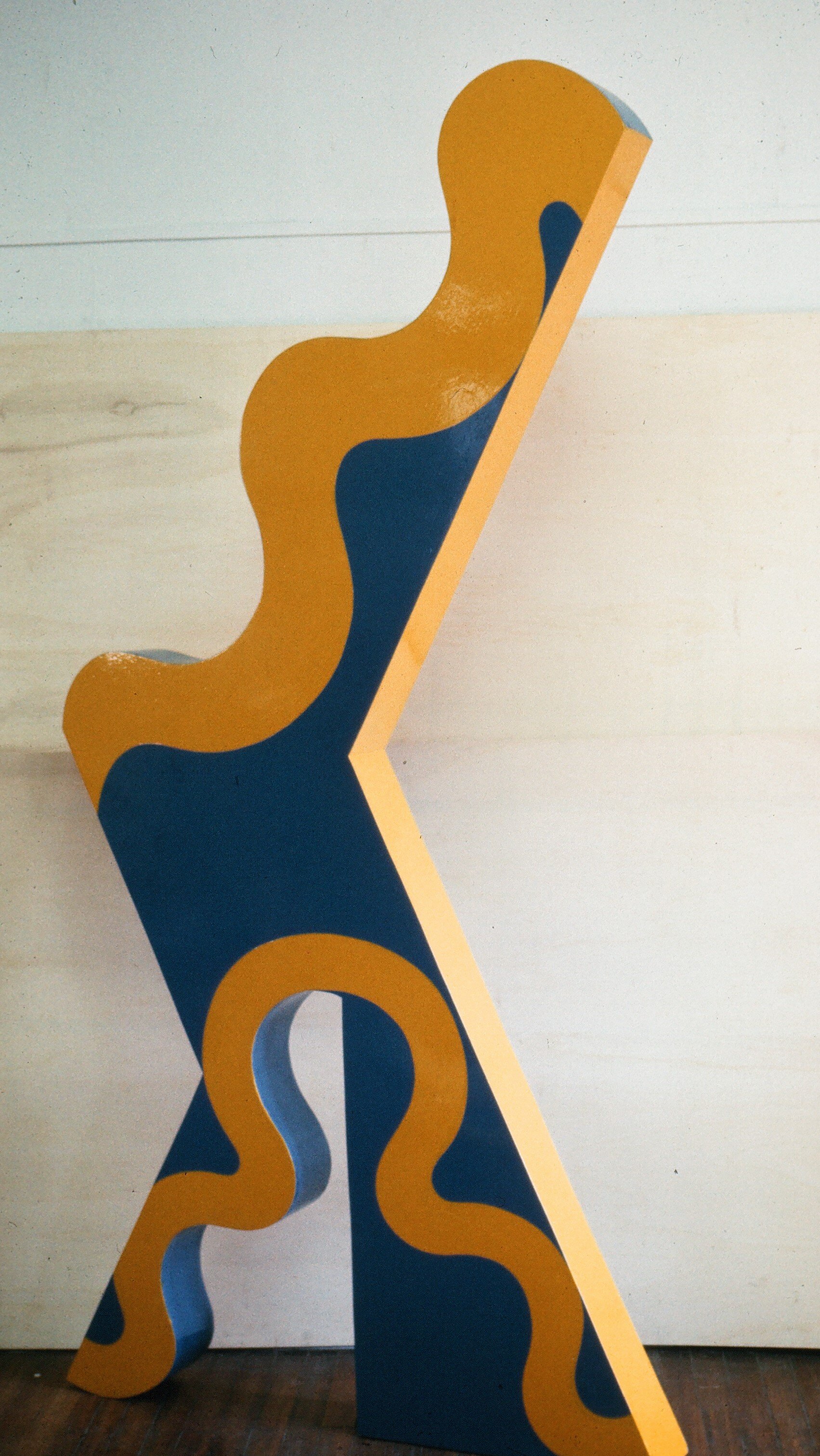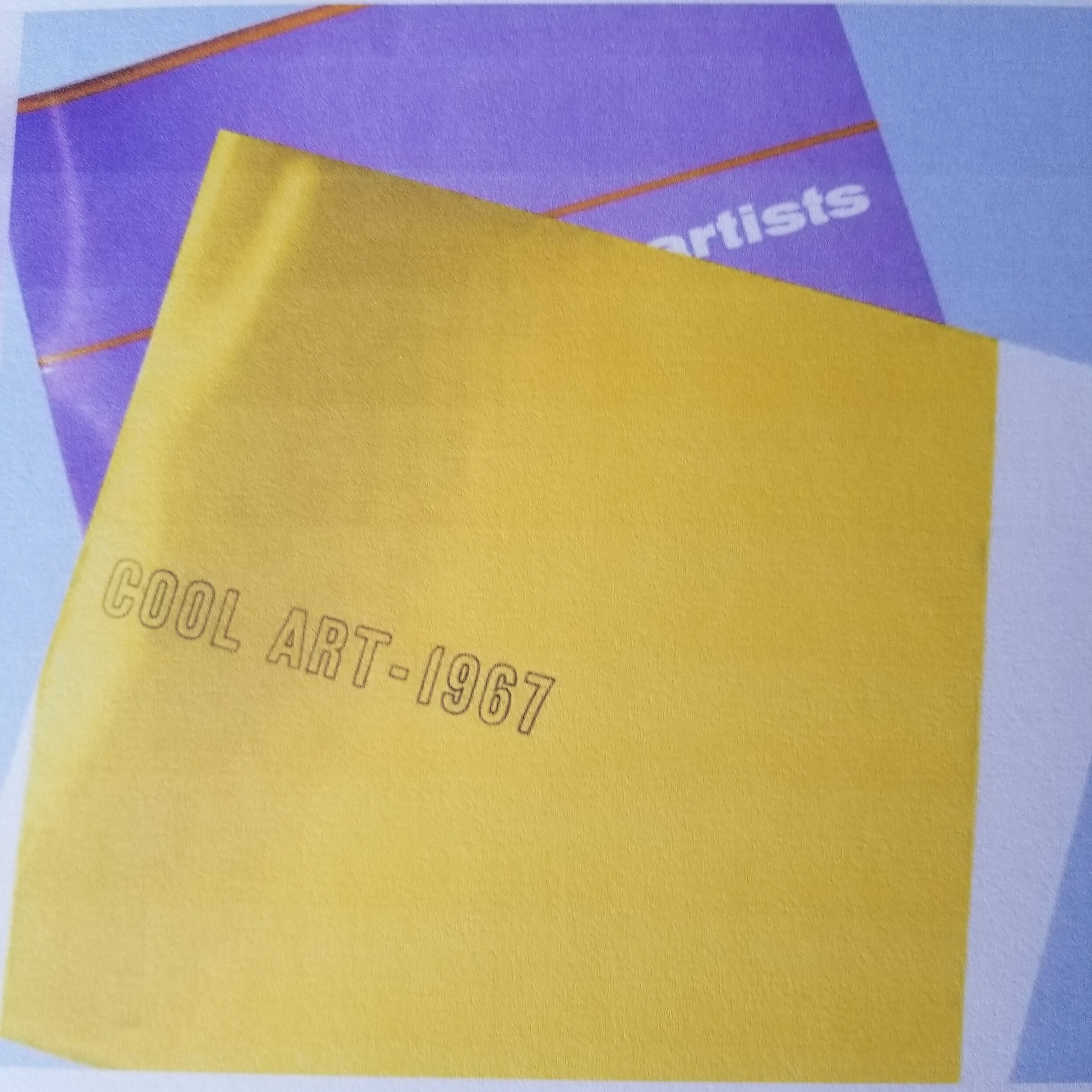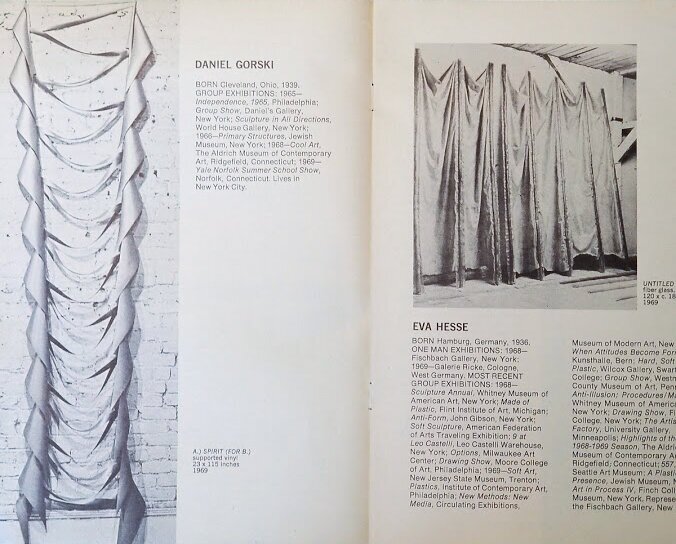Yale - New York
In January of 1964, Dan wrote: Talking with Jack Tworkov helped me to clarify my ideas but in a negative way. He wanted me to try a different color range, not so sharp. I tried this but they proved very unsuccessful. I began to think why these annoyed me, and it was the color. The muted colors slowed the action of the line to a curve. Al Held caught this effect also, and advised me to continue with intensities, and to make them even sharper and faster. I began to truly realize what I wanted my painting to do. I wanted the line to move very fast, to be continually active, taking it through various changes. This is what I feel my paintings are about, that line.
Yale Years
At Yale, Dan’s interests shifted towards geometric abstract painting away from AbEx. He found Pop Art’s formalism and use of color intriguing, as well as the appropriation of abstract art by Jasper Johns—it was at this time - by exploring the relationship between painting and sculpture his work began to address painting’s objecthood. Yale proximity to NYC gave him options as well as did excellent critiques with Alex Katz, Al Held and Jack Tworkov.
Yale: Summer 1962
A drawing and a painting based on letter forms and numbers, using a combination of straight and curved lines in black and white, inspired by Jasper Johns and Pop Art.
Untitled, print, 21x14 inches
Available
Untitled, acrylic on canvas, 30x40 inches
Yale: Fall 1962
Began to paint on a much larger scale with a somewhat limited palette, primarily red, yellow and blue inspired by letter forms. Began to develop a flowing line.
Untitled, 1962, acrylic on canvas, 72x60 inches
Collection of Kalika Gorski
Yale Norfolk: Summer 1963
Gorski experimented with all sorts of forms and approaches– all in a range of pastel colors. Some were painted loosely, some rigid, others combed the rigid and dynamic.
Untitled, 1963, acrylic on canvas, 40x30 inches. Yale Norfolk, Painted Loosely
Untitled, 1963, acrylic on canvas, 40x40 inches. Yale Norfolk, Painted Rigid
Untitled, 1963, acrylic on canvas 50 x 48 inches. Yale Norfolk, combines the rigid and dynamic.
Collection of Bebe Woolley
Gorski started a diptych using the cylinder, which wrapped around the picture plane. Again he was using intense color. The work was influenced by David Smith’s guard-like sentinels, but friendlier, more inviting given their colors, which were influenced by Pop Art.
Left: Sentinels 1, 1963-64, acrylic on canvas, 87x23 inches, transition pieces. Available
Right: Sentinel 2, 1963-64, acrylic on canvas, 87x23 inches, transition pieces. Collection of Bebe Woolley
Yale: 1964
In Gorski’s last year at Yale, he was given a sizable scholarship. He was also among the 9 students selected to work apart from the rest of the school, in large studios in a brownstone on Crown Street*
*The School of Art at Yale; 1950-1970: The Collective Reminiscences of Twenty Distinguished Alumni, Irving Sandler, Art Journal, page 20
Larger Paintings and Their Influence on Sculpture
The Sentinels were painted in his last year at Yale, marked a seminal period when he began to make larger paintings with vibrant colors and eventually into 3-D poly-chrome sculpture.
Shortly after graduation from Yale in 1964, Dan moved to New York City. The graduating class of 1964-1965 was one of the most important to emerge. Many of them entered the NYC art scene at a historically propitious moment. This has assured them a special place in the art history of the period.
Early 1965/1966 - Large Canvases
Through the Looking Glass, 1965, acrylic on canvas, 64x66 inches
Destroyed by Flood
Poon’s Pajamas, 1965, acrylic on canvas, 79.75 x 66.5 inches
Previously this painting was titled Poon’s Rug, It was later re-named for Bebe’s pajamas, which had similar colors and shapes
Collection of Bebe Woolley
1965 The Last Picture Show, acrylic on canvas, 94x115.5 (Diptych). Available
Summer/Fall, 1965 into 1966 - Sculptures
Dan Gorski wrote in 2016: “The summer of 1965 was spent out of the city, and I produced a breakthrough in the work, taking clues from a section of a painting and constructing it in 3D. By fall, I was thoroughly involved in the construction process and painting of several pieces.”
Untitled, 1965-66, enamel paint on mixed materials, 94x23x5 inches
Untitled, 1965-66, enamel paint on mixed materials, 94x 23x5 inches
Untitled, 1966, enamel paint on mixed materials, 91.5 x 5 inches
Destroyed by Flood
Dan and Tony Ray-Jones
Tony Ray-Jones, who liked to use Dan as a model, became a well-known and influential British photographer. Tony and Dan were good friends during Tony’s five-year period at Yale and in NYC. Tony took several photos of Dan which appeared in Car and Driver Magazine (Feb. 1966) as well as on the cover of a British photography magazine.
Cover of Car and Driver Magazine February 1966
Photos of Dan featured in Car and Driver Magazine
Dan on cover of British Photography Magazine, March 28, 1969. Magazine destroyed in flood.
Excerpt of handwritten letter from Tony to Dan
1965 “Sculpture from All Directions”
World House Gallery, NYC
By the summer of 1965, Dan began exhibiting at galleries such as Daniel’s Gallery and World House Gallery. In these exhibitions, he showed along with artists such as Eva Hesse, Robert Mangold, etc. who would eventually be the most important of their generation.
Exhibition Invitation: Description of Show
Exhibition Invitation: List of Artists
Dan’s sculpture in that exhibition was featured in Arts Magazine, Volume 49. No.3, January 1966 page 53. Image is from a copy of the magazine damaged by the flood.
View of "Sculpture from all Directions" show at the World House Galleries, with works (left to right) by Robert Hudson, Paul Van Hoeydonck, Daniel Gorski and Salvatore Romano.
Below is the magazine’s description of Fourth Down and works of other artists in the exhibition.
Description of Fourth Down and work of other Artists in Exhibition
1966 “Primary Structures, Younger American and British Sculptors”, Jewish Museum, NYC
Dan was selected to exhibit in “Primary Structures”, an exhibition which launched a radically new style of sculpture now known as Minimalism. This seminal exhibition places Dan’s painted sculptural works of the time, alongside those of Donald Judd, Judy Chicago, Carl Andre, et.al.
Exhibition brochure and list of artists
Fourth Down in Gray Scale as Shown in Exhibition Brochure.
Museum of Fine Arts Houston Collection
Fourth Down (MOMA archives)
Photos of exhibition were required to be shown in gray scale. McShine made the only color photos in the exhibition now in MOMA’s archives
Fourth Down in front of Dan’s NY Studio, 1966. The pink color is due to shadows and age of the slide
Dan over the years, repainted Fourth Down a number of times. The conservator, Michal Jakubowski, has peeled the layers of paint back to the original state as exhibited in Primary Structures. I can’t emphasize enough Michal’s excitement when he first observed the incredibly beautiful patina of the paint from 1966. Michal called me and excitedly said “the pieces have come alive.” It was an incredible experience to see them. Michal left brush strokes and any aging that added to the look of the pieces. Repair was minimal. The grey was untouched. I wonder if the patina would have been as rich had they not been covered by all those layers of paint.
Fourth Down, Restored, MFAH Collection
Fourth Down, Restored, MFAH Collection
Dan would have been pleased that Michal Jacobowski, a Polish immigrant, restored Fourth Down. Michal was recommended by our Polish friend Anya Tish, of Anya Tish Gallery, Houston. I have had difficulty communicating with Michal considering his Polish accent, my poor hearing and my East Texas accent. Dan would have understood him perfectly, even in Polish.
1966-1967 Ithaca and Larger Studio
Dan at Ithaca
To finance a better studio in NYC, at 275 Grand St., Dan accepted a teaching position at Ithaca in 1966. During that year, he produced a large body of works titled the Trellis Series*. They were constructed of slats of lumber, painted with a new tile/epoxy paint and employed systems of complex layering producing an illusion of 3D. With this series Dan went back to making wall mounted works.
*Lucy Lippard in her 1971 “Essays in Art Criticism” states: “The potentially infinite expansion or openness proposed by Sol LeWitt in his cubic grids or by Don Judd in his rows of standing frames, by Tony Smith’s modular sections of an infinite space-lattice, Dan Gorski’s “trellises,” and Alan Saret’s wire pieces, does relate to Pollock’s or Poon’s continuous surfaces.”
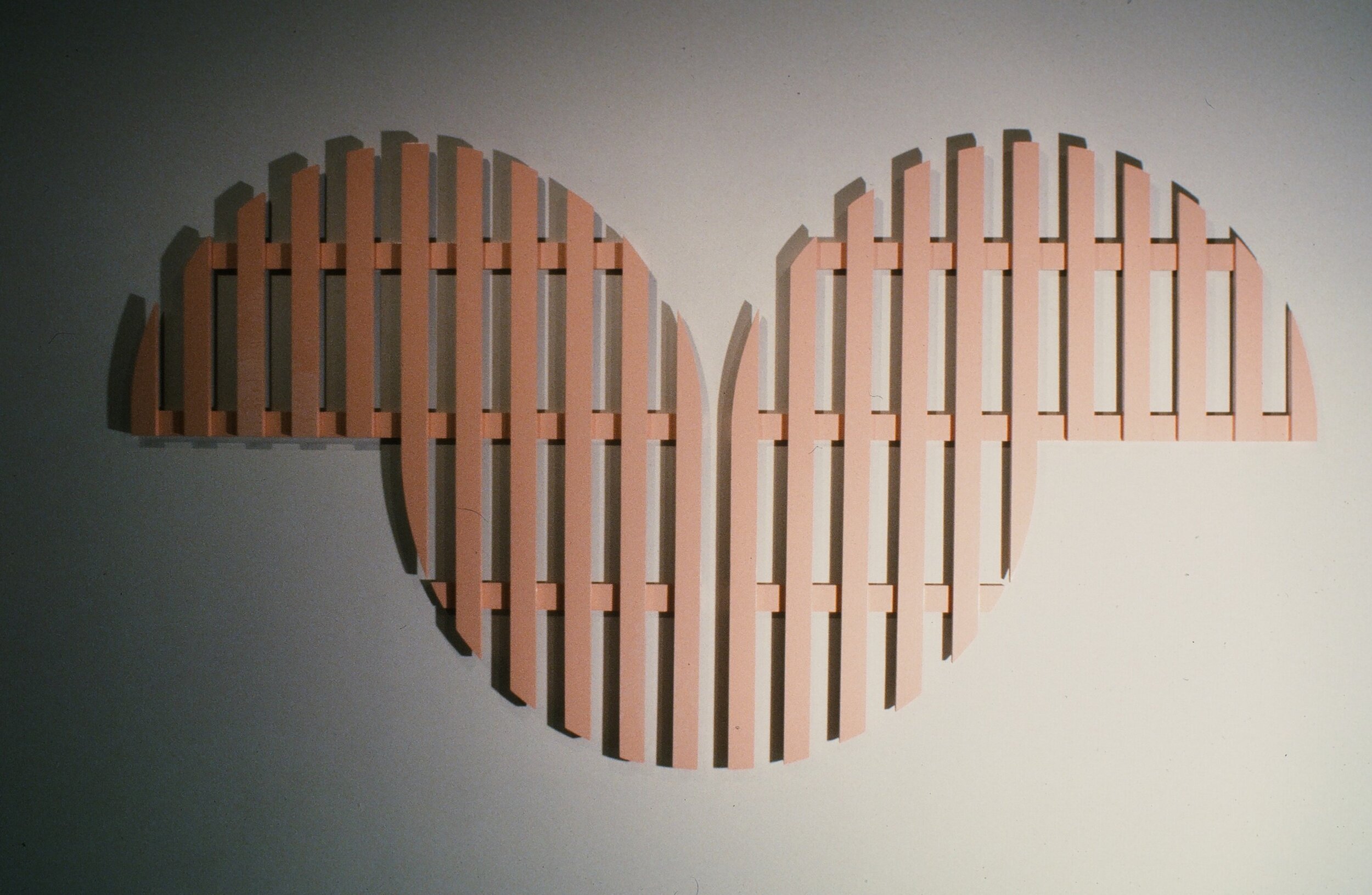
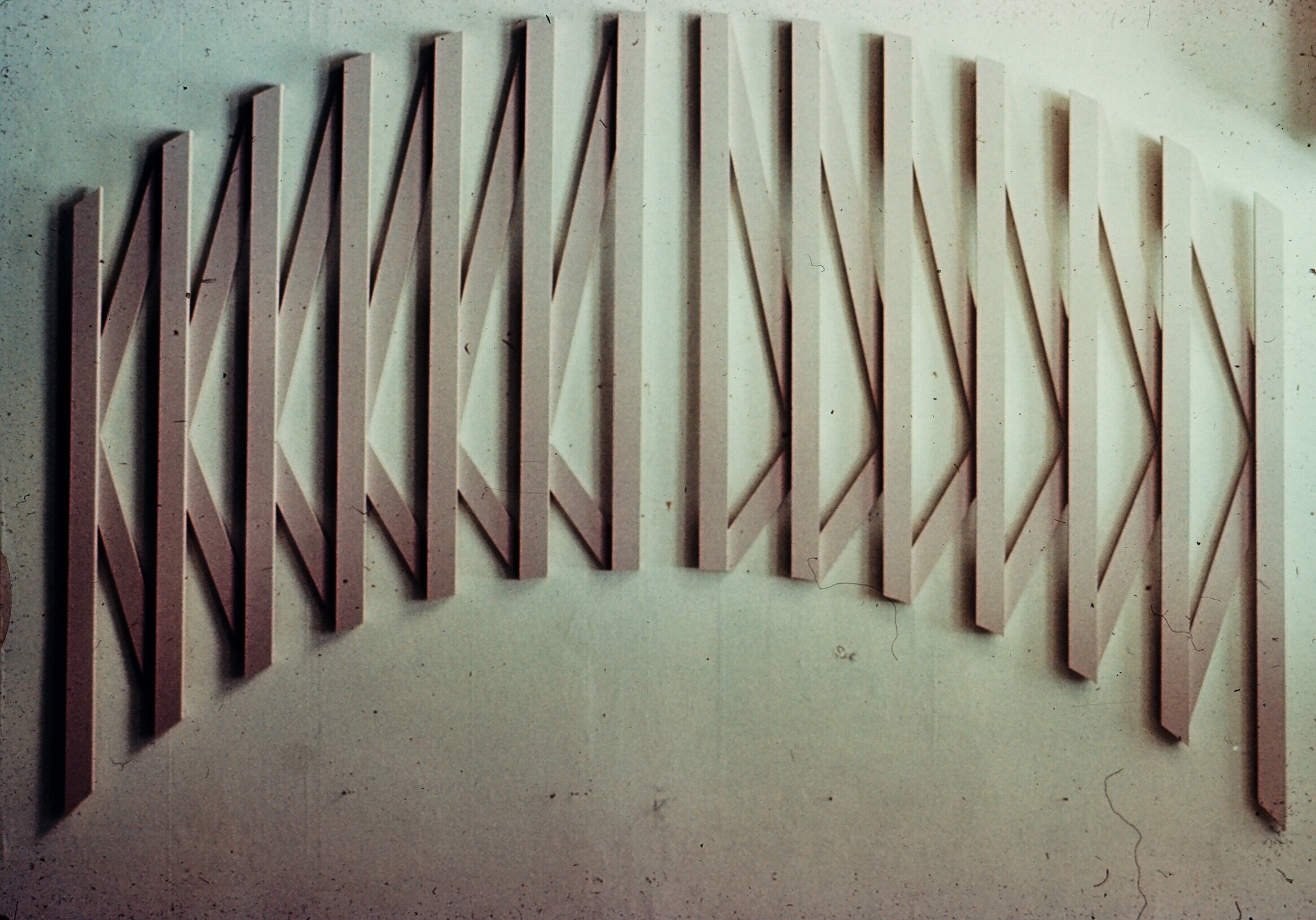
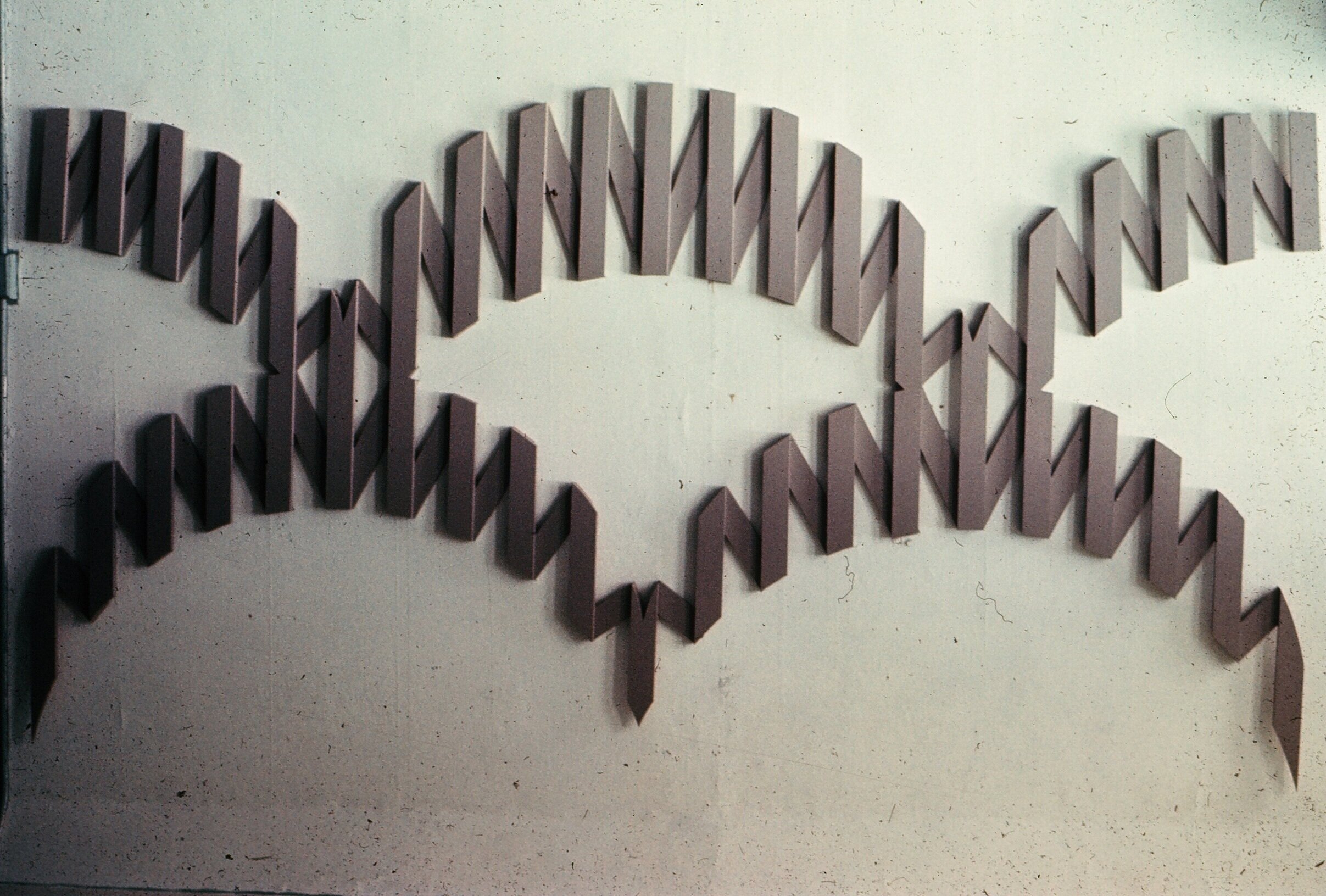
The Trellis Series was a reaction to a body of work damaged beyond repair by a fire in Dan’s Grand St. studio building. These had been slated for a possible exhibition at Bykert Gallery. (I do not know which pieces were destroyed, but Dan had told me about this one)
1966 Giant Steps in front of studio at 275 Grand
Cool Art - 1967: The Aldrich Museum of Contemporary Art, Ridgefield, Connecticut
Exhibition Description and Artists
Description of the Work
1970 “Leaning/Hanging – Hanging/Leaning”,
Emily Lowe Gallery, Hofstra University, Long Island, NY
The exhibition “Leaning/Hanging – Hanging/Leaning”, explored painting’s changing formats. During the 60s artists were motivated by wanting to further eliminate illusionism by making art that was more literal. These artists began to investigate new formats which countered the restrictions imposed by painting’s two- dimensional structure.
Exhibition Invitation
Catalog Cover
Catalog Photo of Gorski and Hesse Pieces
The following is from introduction by Robert R. Littman, Director, The Emily Lowe Gallery in the exhibition’s brochure:
“The shapes established by Eva Hesse and Daniel Gorski became apparent only once the pieces are hanging and they vary according to the density of the material. Daniel Gorski considers the effects of gravity in the shapes he chooses to cut, while Eva Hesse controls the effects of gravity by stiffening her material and thereby making it more resistant to change.”—











